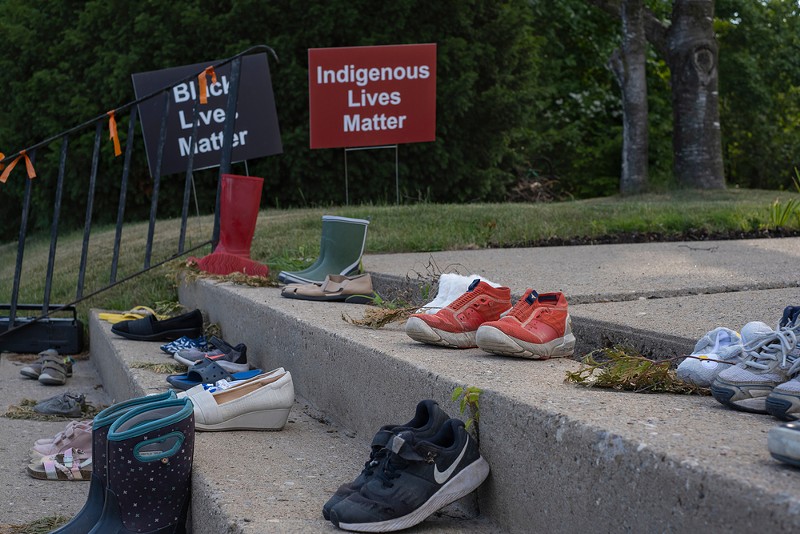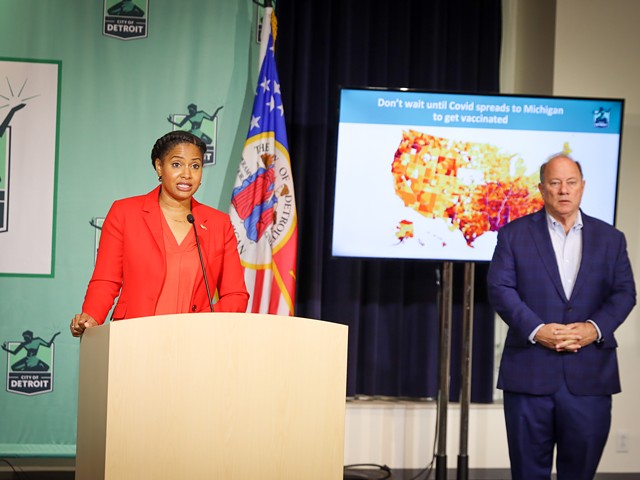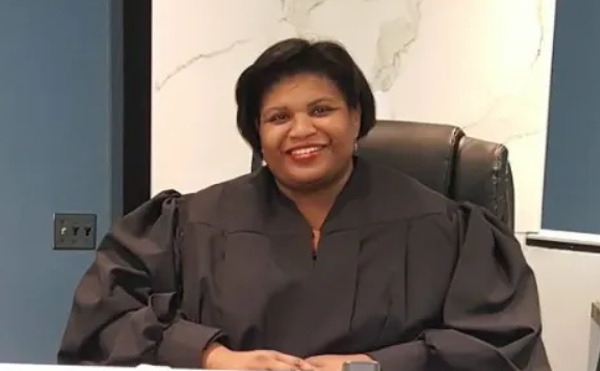
In May, a horrific discovery in British Columbia caught the world’s attention: The unmarked gravesites of hundreds of Indigenous children, buried near the boarding school they were forced to attend by their government and the Catholic Church in a mass effort to assimilate them into white culture.
Since then, over 1,300 graves have been found near five Indian residential schools in the Canadian provinces of British Columbia, Manitoba and Saskatchewan. For many non-Native people, these gravesite findings and subsequent apology from the Canadian government marked the first time they had learned about the schools.
The dark and complex legacy of these institutions is not unique to Canada. The United States’ implementation of the residential school system closely mirrors its northern neighbor.
“It’s all come to light in Canada, and it’s like the tip of the iceberg — oh my God, just wait til they start looking here,” said Linda Cobe, who attended a Michigan school in Harbor Springs.
But the American government has done far less to acknowledge that history or even mention it in history books. That is, until recently.
In June, U.S. Interior Secretary Deb Haaland ordered a federal investigation into the history to identify all of the schools, uncover the scale of lives lost and look into the consequences of the schools.
Haaland’s investigation seeks to acknowledge the histories in order to help Native people today heal from the collective trauma. As the country’s first Native American cabinet secretary and a member of the Laguna Pueblo tribe, Haaland has personal ties to the schools, noting she is “a product of these horrific assimilation policies.” Her great-grandfather was sent away to the flagship U.S. Indian Industrial School in Carlisle, Penn., usually referred to as the Carlisle school.
“I know that this process will be painful. It won’t undo the heartbreak and loss that so many of us feel,” Haaland said. “But only by acknowledging the past can we work toward a future that we’re all proud to embrace.”
Michigan schools
Michigan is no different from other states that have contributed to this dark chapter of not-so-distant United States history.
“It’s really a lot for Native people to be hearing about these little ones that are buried, but we don’t talk a lot about or even pay attention to the ones that survived and are living today that have to deal with that intergenerational trauma,” said Leora Tadgerson, a Bay Mills Indian Community (BMIC) citizen and the director of diversity and inclusion at Northern Michigan University.
In total, 27 U.S. states — including Michigan — were once home to some number of boarding schools, all of which were modeled after the notorious Carlisle school. It opened in 1879, after which the federal Bureau of Indian Affairs (BIA) began authorizing federally funded schools across the country with its likeness.
“It was their idea to assimilate us into white society. And their motto was, ‘Kill the Indian, save the child,’” said Robert Hazen, a Michigan survivor of a school in Harbor Springs.
That ubiquitous phrase was coined by Army officer Richard H. Pratt, founder of the Carlisle school and a fervent advocate for Native assimilation through “education.”
“A great general has said that the only good Indian is a dead one … In a sense, I agree with the sentiment, but only in this: that all the Indian there is in the race should be dead. Kill the Indian in him, and save the man,” Pratt said in 1892.
At the peak of the BIA’s program, 350 residential schools were in operation nationally. More than 200 were still in operation by the 1970s. The BIA did not return a request for comment for this story.
Three of these federal schools existed in Michigan: The Holy Childhood School of Jesus in Harbor Springs; the Old St. Joseph Orphanage and School in Assinins near Baraga in the Upper Peninsula; and the Mount Pleasant Indian Industrial Boarding School in Mount Pleasant.
“It was quite literally more expensive to exterminate Native Americans than to educate them, so they educated them,” Tadgerson said. “Even in ‘Mein Kampf,’ you’ll be able to see that [Adolf] Hitler loved the model we had put out for boarding schools and used them within his genocide acts.”
Hundreds of Anishinaabe children in Michigan were plucked from their tribal communities to attend, often many hours away from their homes. The children’s hair was cut and their clothing replaced for more “white” attire. They were separated from their siblings, given English names and punished for speaking their Indigenous tongue.
Stories of abuse, starvation, unsanitary living spaces and more abound, although some boarding school survivors recall better experiences than others.
Tadgerson, who is working on an exhibit to uplift the voices of boarding school survivors around the state and educate non-Native Michiganders about their experiences, said that many tribal citizens with connections to the schools still struggle with either their first-hand experience there or with their family’s intergenerational trauma caused by it.
“Some folks just quite literally can’t speak about it,” Tadgerson said. “They just blocked it out completely because it was so intense.”
Continue reading this story on MichiganAdvance.com to read the accounts of people from different tribes who either attended a school or who had family members who did.Originally published Aug. 16, 2021 on MichiganAdvance.com. It is republished here with permission.
Stay connected with Detroit Metro Times. Subscribe to our newsletters, and follow us on Google News, Apple News, Twitter, Facebook, Instagram, or Reddit.





